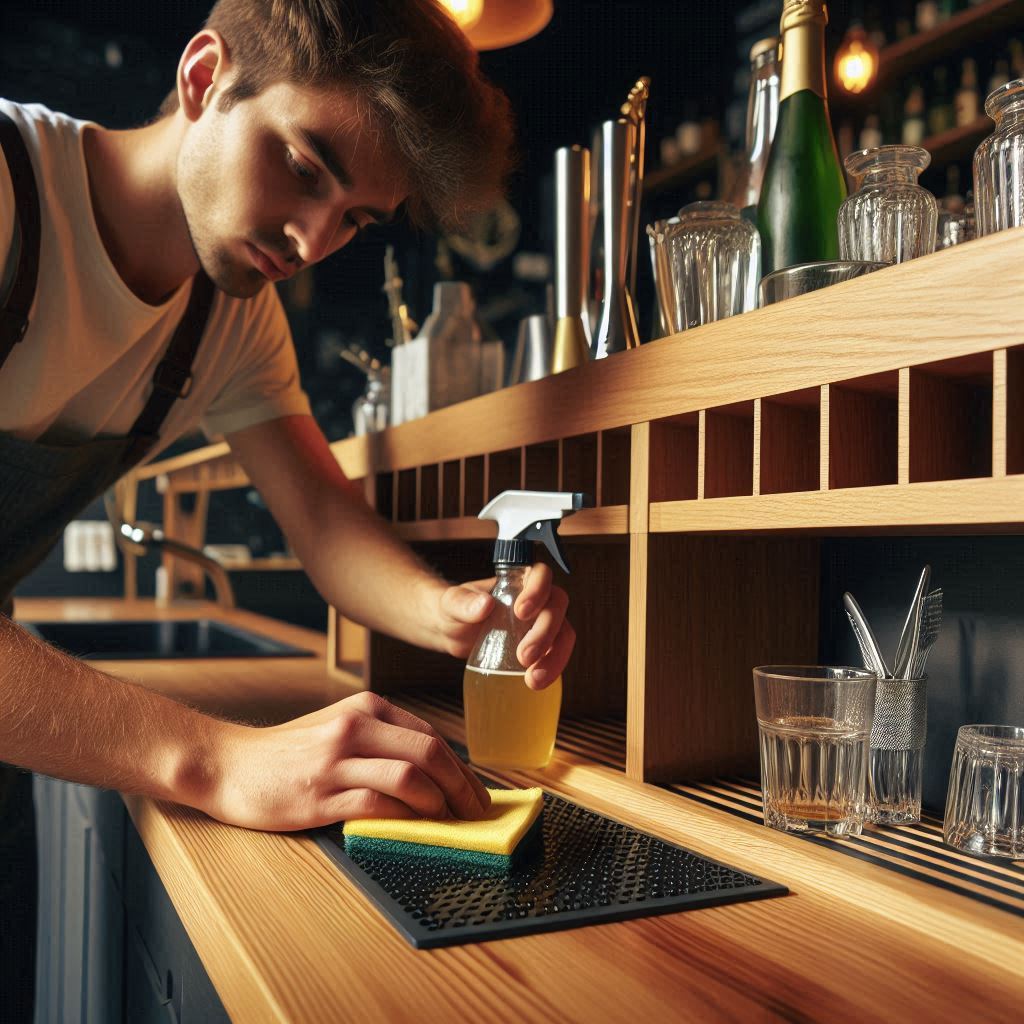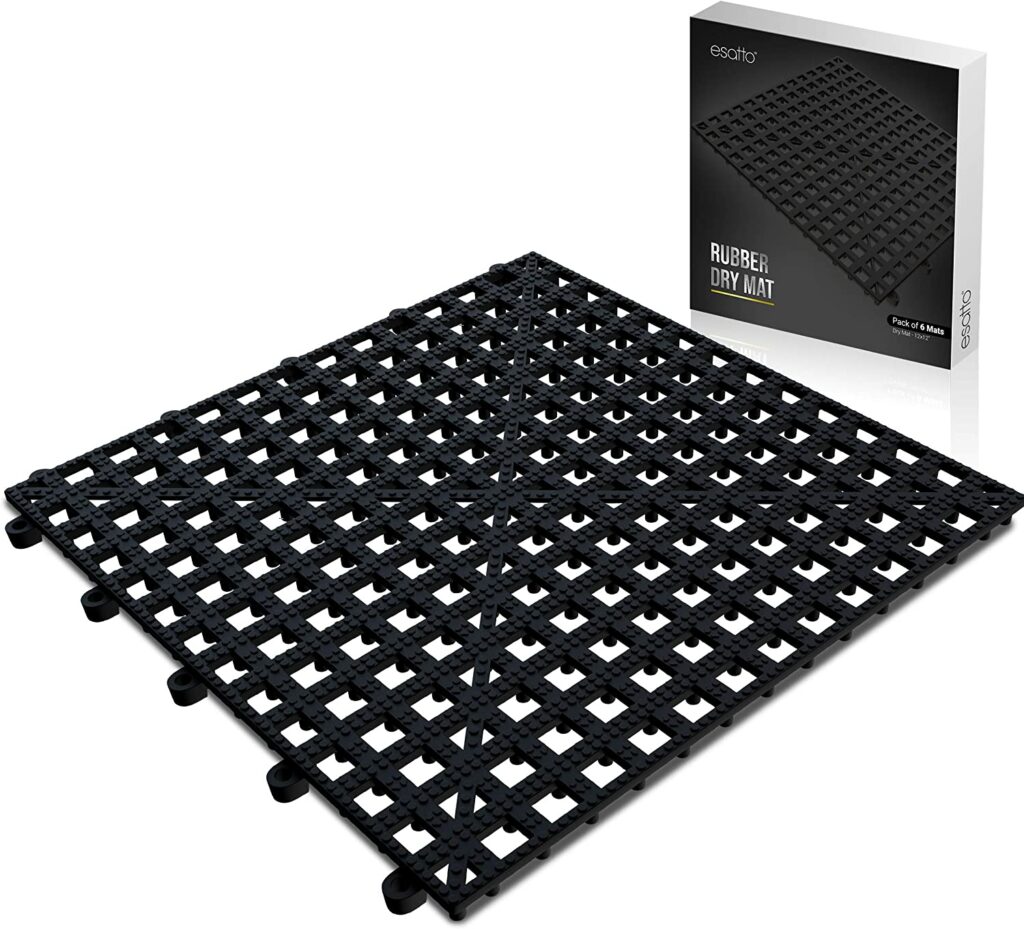
Interlocking shelf mats are unsung heroes in the bustling environment of bars and restaurants. Often overlooked, these mats play a crucial role in maintaining cleanliness and organization behind the bar.
From providing a non-slip surface for glassware to protecting countertops from spills and scratches, interlocking shelf mats are essential accessories for any bar setup. However, like any tool, they require proper care and maintenance to ensure their longevity and effectiveness.
In this comprehensive guide, we will delve into the intricacies of cleaning and caring for interlocking shelf mats. From understanding their composition to implementing best practices for maintenance, we will equip you with the knowledge and tools necessary to keep your interlocking shelf mats in pristine condition.
Understanding Interlocking Shelf Mats

Interlocking shelf mats come in various shapes, sizes, and materials, but they all serve a common purpose: to provide a protective barrier between glassware, bottles, and countertops. These mats are typically made from durable materials such as rubber, silicone, or PVC.
Rubber mats offer excellent grip and cushioning, silicone mats are known for their flexibility and resistance to high temperatures, and PVC mats are lightweight and easy to clean, making them a popular choice for busy bars and restaurants.
Regardless of the material, proper maintenance is essential to ensure the longevity and effectiveness of interlocking shelf mats. Neglecting routine cleaning and care can lead to the buildup of dirt, grime, and bacteria, compromising hygiene standards and potentially causing damage to the mats.
Cleaning Interlocking Shelf Mats
- Initial Debris Removal: Start by removing any debris, spills, or residue from the mats using a soft-bristled brush or damp cloth. This step helps prevent further soiling.
- Washing with Soap and Water: Once debris has been removed, wash the mats with a mild detergent or dish soap and warm water. Use a sponge or soft brush to gently scrub the surface.
- Disinfecting: After washing, disinfect the mats using a solution of water and a suitable disinfectant. Ensure that the disinfectant is safe for use on the mat material and food contact surfaces.
- Drying: Finally, dry the mats thoroughly with a clean towel or allow them to air dry completely before returning them to their designated area. Proper drying is essential to prevent mold and mildew growth and maintain cleanliness.

Why Cleaning Interlocking Mats is Essential
Regular cleaning and disinfection of interlocking shelf mats are essential for preserving hygiene standards and preventing the spread of germs and bacteria in the bar environment. By following these simple steps, you can ensure that your mats remain clean, safe, and effective for years to come.
Tips for Extending Interlocking Mats Lifespan
- Establish a Cleaning Routine: By making cleaning a habit, you can prevent the buildup of dirt and grime and minimize the need for intensive cleaning sessions.
- Use Gentle Cleaning Products: Avoid harsh chemicals or abrasive cleaners that can damage the surface of the mats. Opt for mild detergents or specially formulated cleaners designed for use on rubber, silicone, or PVC surfaces.
- Proper Storage: When not in use, store interlocking shelf mats flat or rolled to prevent warping or deformation. Avoid stacking mats on top of each other, as this can cause pressure points that may lead to damage over time
By implementing these tips into your maintenance routine, you can prolong the lifespan of your interlocking shelf mats and ensure they remain in optimal condition for years of use.
Troubleshooting Common Issues
Despite your best efforts, you may encounter some common issues when caring for interlocking shelf mats. Here are some common problems and how to address them:
- Mold and Mildew Growth: Mold and mildew can develop on interlocking shelf mats if they are not properly cleaned and dried. To remove mold and mildew, wash the mats with a solution of water and bleach or vinegar, then thoroughly dry them in a well-ventilated area.
- Discoloration or Staining: Over time, interlocking shelf mats may become discolored or stained due to spills or prolonged exposure to certain substances. To remove stains, scrub the affected areas with a mixture of baking soda and water or a commercial stain remover, then rinse thoroughly.
- Odor Control: Persistent odors can develop on interlocking shelf mats if they are not cleaned regularly or if spills are not promptly addressed. To eliminate odors, wash the mats with a solution of water and baking soda or vinegar, then allow them to air dry completely.
By addressing these common issues promptly and effectively, you can keep your interlocking shelf mats looking and smelling fresh for years to come.
Best Practices for Storage
Proper storage is essential for maintaining the quality and integrity of interlocking shelf mats when they are not in use. Follow these best practices to ensure your mats remain in optimal condition:
- Designated Storage Area: Store interlocking shelf mats in a designated area away from direct sunlight, extreme temperatures, and sources of moisture. Choose a clean, dry location with adequate ventilation to prevent mold and mildew growth.
- Organize Efficiently: When storing multiple mats, avoid stacking them on top of each other, as this can cause pressure points and deformation. Instead, store mats flat or rolled to maintain their shape and integrity.
- Use Protective Covers: Consider using protective covers or containers to shield interlocking shelf mats from dust, dirt, and other contaminants during storage. Ensure that the covers are breathable to prevent moisture buildup and mold growth.
By following these storage best practices, you can prolong the lifespan of your interlocking shelf mats and ensure they are ready for use whenever you need them.
Importance of Regular Bar Mat Inspection
Regular inspection is critical for identifying signs of wear, damage, or hygiene issues on interlocking shelf mats. Here’s why regular inspection is essential and how to conduct it effectively:
- Preserving Quality: Regular inspection allows you to identify and address any issues with interlocking shelf mats before they escalate and compromise their quality and effectiveness.
- Ensuring Hygiene: Inspecting mats for signs of dirt, grime, or mold helps maintain hygiene standards and prevent the spread of germs and bacteria in the bar environment.
- Preventing Damage: By identifying signs of wear or damage early, you can take corrective action to prevent further deterioration and extend the lifespan of your mats.
To conduct a thorough inspection, visually examine the mats for signs of discoloration, staining, or damage. Pay attention to areas with high foot traffic or frequent use, as these are more prone to wear and tear. If any issues are identified, take prompt action to address them and prevent further damage.
Interlocking Cleanliness and Quality Service
Interlocking shelf mats may seem like minor accessories in the grand scheme of a bar or restaurant operation, but their role in maintaining cleanliness and organization cannot be understated. By investing time and effort into cleaning and caring for interlocking shelf mats, you can ensure they remain effective and reliable tools for years to come.
From establishing a regular cleaning routine to implementing proper storage practices, every aspect of maintenance contributes to the overall longevity and effectiveness of interlocking shelf mats. By following the tips and guidelines outlined in this comprehensive guide, you can keep your mats in pristine condition and create a safer, more hygienic environment behind the bar.
Remember, the cleanliness and organization of your bar reflect on your establishment as a whole. By prioritizing the maintenance of interlocking shelf mats, you demonstrate your commitment to excellence and create a positive impression on customers and staff alike. So, take care of your interlocking shelf mats, and they will take care of you in return.
